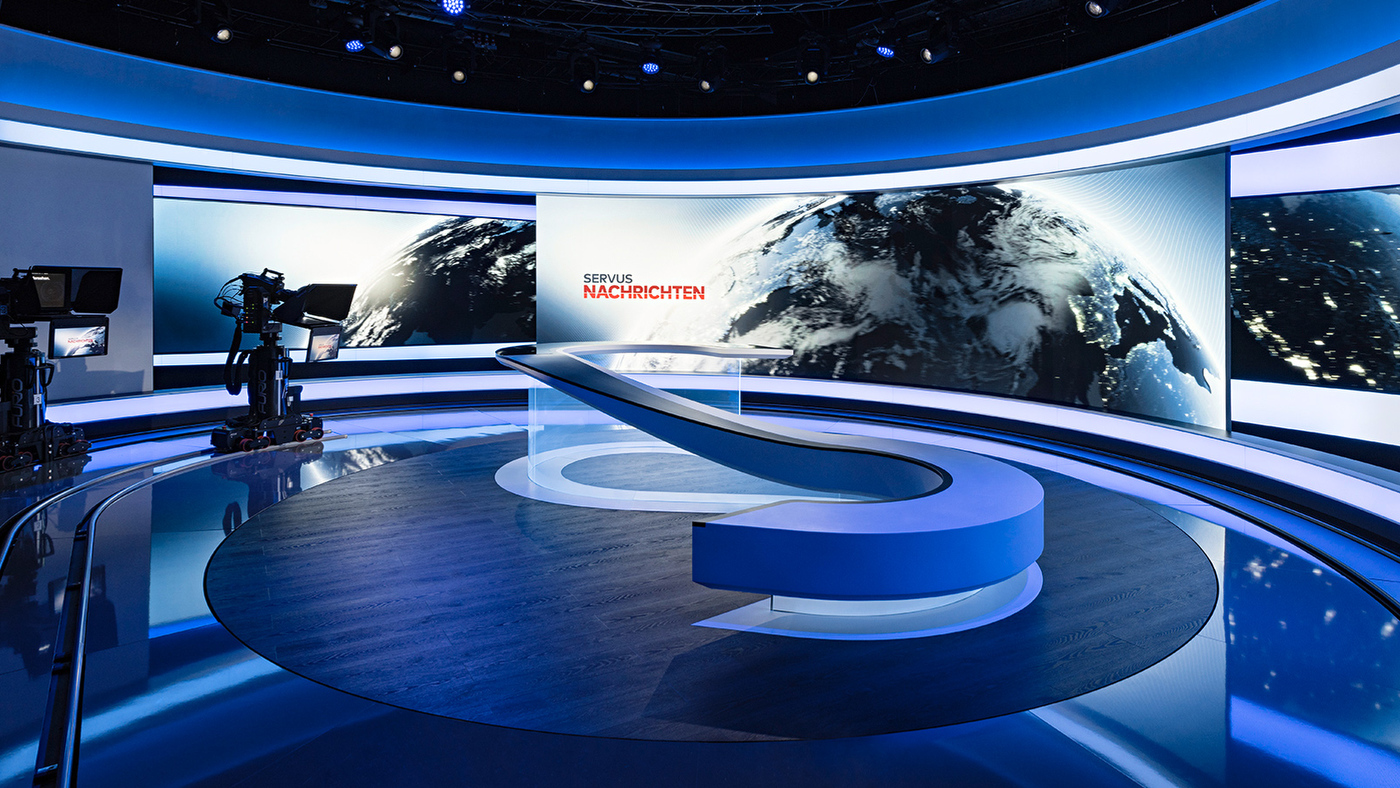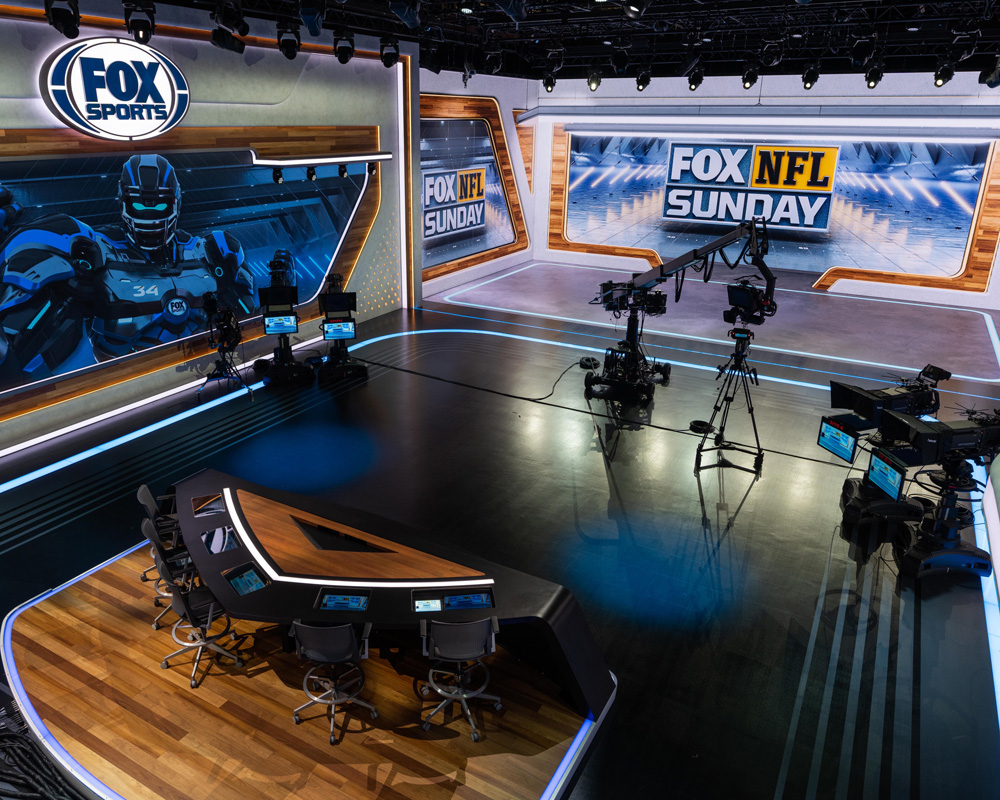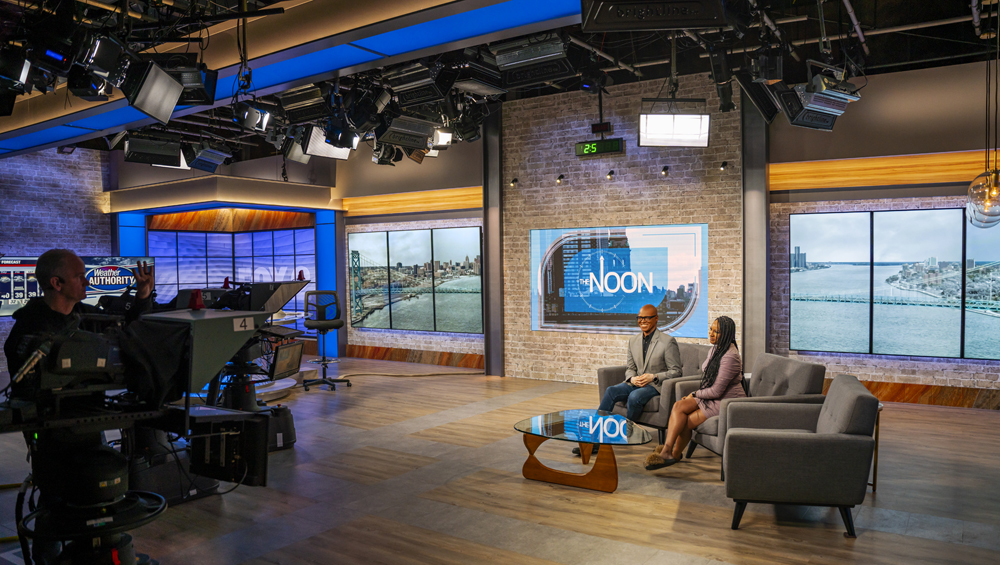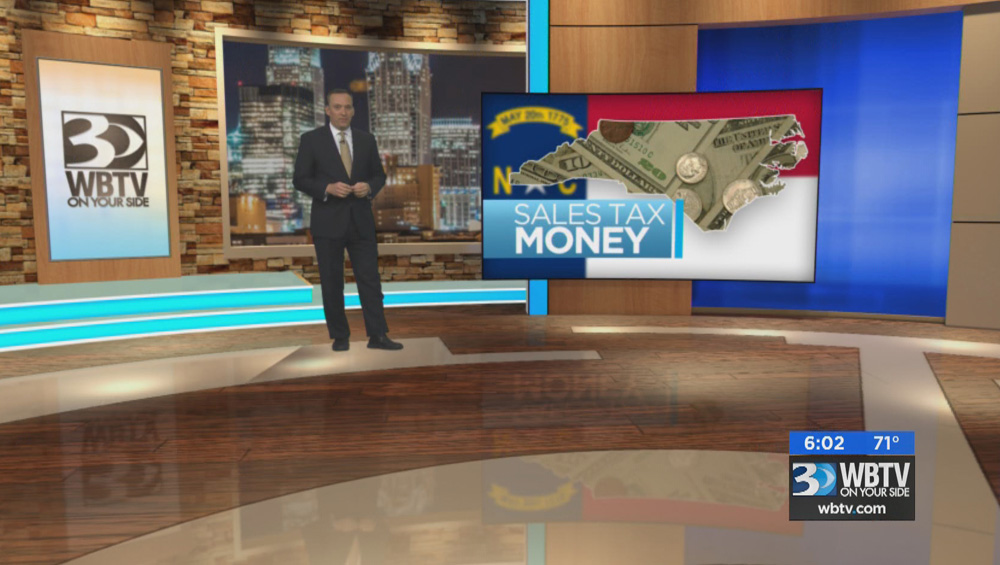
Virtual Sets Gain Traction, But U.S. Stations Still Reticent

LED and digital technologies are ushering in an era of big video in studios.
Costs for LED walls are dropping, and they don’t present some of the challenges broadcasters face with green screens. Virtual, or digital, sets are increasingly realistic as the technologies that support them improve, and they offer flexibility that is rare with real sets. Even with the pluses, uptake on virtual sets in U.S. broadcast studios has been sluggish compared to international broadcast studios although LEDs are present in many projects.
“LED video is becoming more commonplace as the budgets become friendlier,” Mack McLaughlin, CEO and creative director at FX Design Group, says. “There’s probably an LED wall in as many as 50% of our projects. They can afford at least one LED area.”
LED walls are trending larger and less expensive, with local stations spending $100,000 to $150,000 on a video wall, and national studios spending upwards of half a million dollars on LED walls, he says.
Jared Schatz, SVP vertical markets and solutions at Ross Video, says even smaller markets were discussing LED options for studios during April’s NAB Show.
“They need to catch up with their audience,” adding that one of the ways to do that is to take advantage of the biggest trend he’s seeing right now, which is the concept of big video.
“LED is primarily the big driving force behind big video,” he says, noting LED makes it easier to interact with content, and the environment can be extended using graphics that marry up to it.
LEDs “change the dynamic. It kind of solves the problem that the virtual has had in the past,” Schatz says. “Studios of past had green screens, and only meteorologists were comfortable in front of them.”
With LED, no chroma key is required.
André Durette, SVP and executive design director at Jack Morton, says large LED volumes, particularly a combination of floors and walls and sometimes ceilings, are increasingly popular. These units are often used as a set within a set, he says, and he’s seeing requests to extend the virtual world within a real set from bigger sports clients and some news studios.
“The virtual set will live in the real set,” he says.
Fox Sports, for example, wanted a real set plus flexibility, he says. That design project was for an 8,000-sq. ft. studio and represents the “largest LED volume we’ve done for a client,” he says.

Fox Sports Stage A. (Skip Clark, courtesy Fox Sports)
On the other hand, he says, some clients who cannot afford a full LED volume may opt for a hybrid design with half real and half green screen.
“We build that in virtual, and it’ll be an extension of the real set,” Durette says.
Designing a digital set requires a different mindset than designing a hard set, Durette says. A conventional set is dictated by four walls that “you can’t go beyond,” but in the world of virtual, the set can be “enormously big.”
If the studio is a box measuring 16 feet by 16 feet by 16 feet, “the space within it could be a stadium,” Durette says. “In a world of virtual, you can go way beyond that 16 x 16 x 16-foot box.”
As more virtual sets do come online, Diane Fiolek, VP and creative services director at Devlin Design Group says clients are learning that there’s more to bringing such a set to reality than they expected. It’s not like pushing a button and a virtual set flies out, she adds.
“You’re still developing a real environment. The feel, the functionality, all the things that go along with developing a real set, but now we’re doing them in the virtual space,” she says.
While a company like DDG designs the set, a virtual builder like Pixotope creates it.
“A lot of people don’t understand all the steps that need to happen, and all the people who are involved,” she says.
Schatz says LED walls are dynamic and offer flexibility, but when choosing LEDs, he says it’s important to look at the quality rather than “falling into the buying carpet mode” and focus on cost per foot.
“For a television station, that’s a bad way to look at it,” he says. Instead, he adds, studios should consider things like the video workflow, capabilities of the system, the system’s refresh rates, whether it supports the addition of extended reality and long-term support.
The goal is for it to “run in perfect operation for at least 10 years,” Schatz says.
In addition to the dynamics LED walls bring to a broadcast, they provide flexibility.
Kartik Dakshinamoorthy, president and co-owner of Devlin Design Group, says that when customers choose virtual sets, they still want the realism that a real set provides. And when they opt for a hard set, they want the same flexibility that a virtual set provides, he adds.
Fiolek says many customers request “Swiss Army knife” versatility in their sets. In 2018, DDG designed a scenic storytelling environment for the main newscasts for Fox 2 Detroit, WJBK, and recently DDG designed a studio versatile enough to serve the station’s morning and noon newscasts, she says, as well as to provide a large interview area for lifestyle shows as well as other types of programming.
She says the resulting design embraced the Detroit vibe and used color changing elements allowing custom color palettes for different shows.

Different shows, including two newscasts, two lifestyles shows and other types of programming, such as a round table political show, take place in this new WJBK Detroit studio by Devlin Design Group.
For one client, DDG had been developing a hard set design for one legacy program when the project took a 180 and the customer opted to go the virtual route, she says.
“We were able to design this incredible space for the client, much larger than a typical set budget would have allowed for,” she says, noting virtual sets are not “confined by the budget of certain monitor sizes, fixtures, lighting, all these other things.”
Dakshinamoorthy says most international projects use mixed reality, combining hard sets with green screens.
“European and Asian market much more embracing of virtual sets and mixed reality,” he says.
McLaughlin says a series of FX studies intended to gauge audience acceptance of virtual, or digital, sets compared to real sets indicated that when the design is done well the audience didn’t care if it was digital.
“In some instances, they preferred it,” he says. On the other hand, the rejected some digital designs as being “so bad they can’t watch it.”
International broadcasters have embraced digital, he adds.
“They’re watching digital avatars in Asia,” McLaughlin says. “They’re watching digital anchors on digital sets, and we’re still not even willing to do digital sets.”
The technology is not a problem when it comes to virtual sets, he says.
“We’re working with Brainstorm. The technology is there. The design is there, especially with the Unreal engine. The audience is there. The only ones that aren’t there are the stations,” he says.
In fact, the capability has been in place for years, McLaughlin says, and FX designed a project for WBTV Charlotte, N.C., using technology from Hybrid Robotics, which Chyron later bought. It featured a main studio, anchor set, stand up area and weather studio along with a studio with an oversized green screen, he says.

FX Design Group designed this digital set for WBTV Charlotte, N.C., nearly a decade ago. The station was able to do live election tracking and used the Hybrid Robotics non-tracking system, which no longer exists.
He says he believes every station should have a digital set at its disposal to add variety while allowing it to monetize the studio and its equipment when there is space in the schedule. “It’s never going to save you money, but going digital could make you money.”
Editor’s Note: A previous version incorrectly said that WBTV Charlotte used Hybrid Robotics until Chyton stopped supporting the technology. Actually, Chyron transitioned its Hybrid Robotics technology into its PRIME platform under a new name, PRIME VSAR. At no time has Chyron ever stopped supporting virtual set technology and workflows.
























Comments (0)